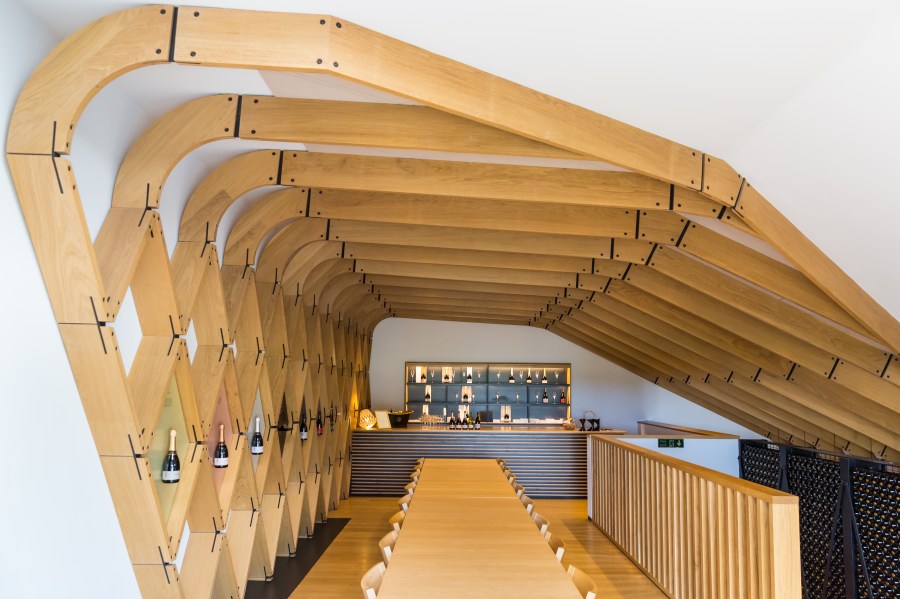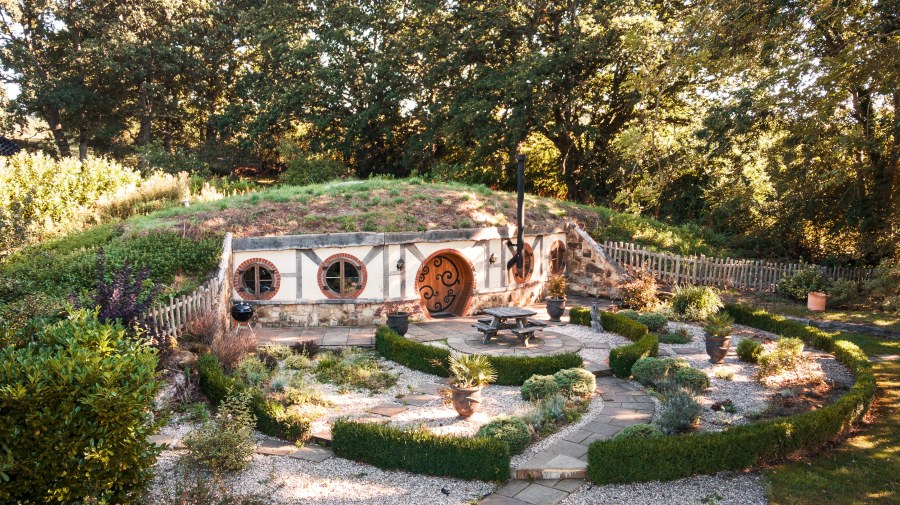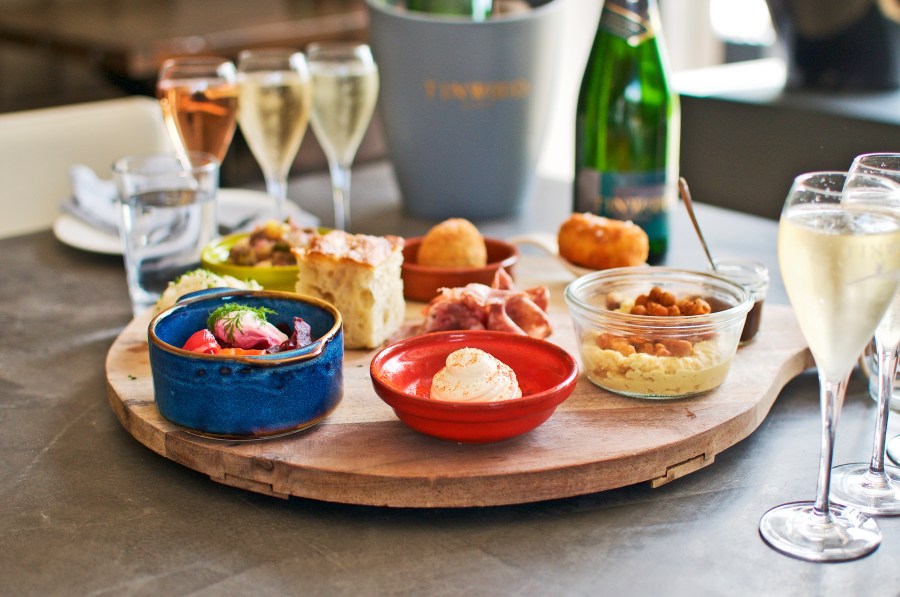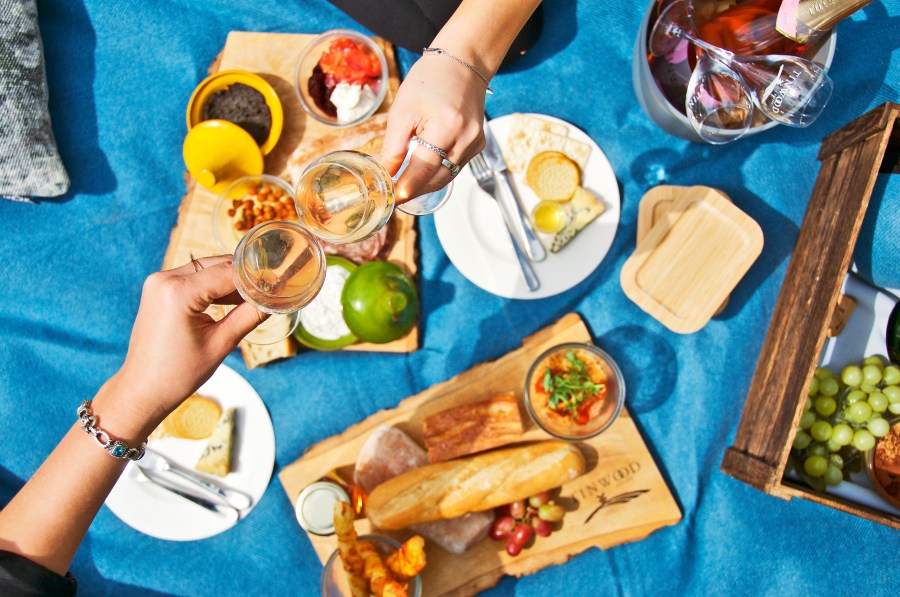The WineGB Trade Survey for 2022-23 told us that wine tourism provides an average of 24% of the total revenue generated by English and Welsh vineyards and wineries. Given this significant figure, it is not surprising that many UK wine businesses are planning to expand their offer in the short term. But where are the opportunities for growth and expansion in the UK wine tourism market?
What is wine tourism?
Wine tourism is a travel experience that centres on exploring wine culture. That might mean a visit to a vineyard, winery or other related locations to engage with a diverse spectrum of activities. For premium wineries, direct-to-consumer sales are a vital source of income. Encouraging those interested customers to come directly to your location is a proven, and efficient strategy for bolstering sales.
Traditionally, wine tourism has been focused on educational experiences; guided tours and wine tastings, perhaps lending a helping hand as a harvest volunteer. But increasingly wine businesses are diversifying their offer. Food pairing sessions remain popular, but more and more vineyards are offering a permanent dining option at their venue to attract a new clientele. This capacity for accommodating guests on a drop-in basis rather than only at formal booked events maximises opportunities for wine sales.
Having accommodation on site, whether in the estate buildings themselves or via a glamping model, is also more widely visible these days. Wineries are taking the opportunity to build collaborations and partnerships with neighbouring businesses and communities to host and participate in more cultural activities within their environs.
As well as giving visitors a pleasing sensory experience, wine tourism acts as a way to offer insight into the traditions and craftsmanship of wine growing and production. These activities can give a new window to the rich variety and importance of the natural landscape. And perhaps most importantly, they provide people with enriching activities to engage with in their leisure time – wine tourism is fun!
Wine tourism insights
Regardless of geography, wine businesses across the globe face similar issues – they are usually small, independent operators who are attempting to compete against global industries. Winetourism.com offer consultancy services to wineries and vineyards around the world. They have about four thousand clients who use their site to target new visitors. As the largest online booking service for wine experiences, winetourism.com is regularly asked for insights into boosting the quality and take-up of wine tour experiences. They offered Vineyard Magazine some top tips:
- Ensure that your online copy is more orientated towards the visitor’s experience and not your offer. In practice, this means using the word “you” more than you use the word “we”. Tell potential visitors what they will experience and what they might enjoy when they come on your tours. Think about their needs and what will help them to access your tours easily – make it easy for them to book, to know that their access requirements will be met and so forth.
- Move the focus from your social media feeds to other people’s. Find ways to get visitors to post pictures of their experiences on their own Instagram squares and stories. People expect you to wax lyrical about how fun your tours are. But 100 visitors with 1000 followers can reach 100,000 potential new visitors, and their recommendation is more believable. With this in mind, make it easy for guests to share their visit – make your social media handles and hashtags visible to guests and give them calls to action IRL (in real life) while they are with you.
- Personalise the experience for your top visitors, especially those who visit in person and buy wine. The Pareto Principle says that 80% of your income comes from 20% of your clients, so work hard to maintain a personal bond. Handwritten notes, bespoke offers and money-can’t-buy invitations are all ways of nurturing that important client base.
Vineyard tours: step by step
Dipping your toe into wine tourism for the first time can be intimidating. Indeed, inviting the public to your vineyard or winery is not something you want to get wrong, as the reputational damage of a botched event could be considerable. But even for the smallest wine business, starting your own tour can be simple to manage and not too onerous a commitment, if you break the process down into simple steps.
Things to consider when arranging tour and tasting events:
- Think about the best times and dates for your tour. Consider using your social media to reach out to existing customers to find out when they’d be most likely to attend.
- Look at your options for ticketing.
– Platforms like Eventbrite provide an off-the-shelf solution that has the added benefit of making your event more visible. However, there is a small cost to using these solutions which you can choose to absorb into the ticket price or defer to the customer.
– Building a simple ticketing portal on your website is not hugely complicated for the more tech-savvy or those with web designers to hand. It saves on those additional costs (but not card fees) – but then the promotion is all down to you. - Do a bit of market research to set your ticket prices. Make sure you’re in line with the local competition and that you are charging enough to cover the cost of wine samples and your time.
- Plan the event. Where will you take the group? What will you show them? What are the key parts of your story and ethos that you would like to share?
- Once you have a plan, you can start thinking about logistics. Consider:
– How long will the event last?
– Is the route accessible?
– Are toilet facilities available?
– How many guests can you accommodate in your space?
– Where will you host a tasting and do you have sufficient glassware available? - Once you have these details planned out, you can start writing a description to promote the event. Think about what a visitor will need to know to facilitate their journey – where do they park, and if they don’t drive can they still access your venue, for example?
- Plan out the running order of the session in advance, including briefing any staff or volunteers who may come along to help. Are you pouring tasting samples in advance, or as you go? What happens if the weather is inclement? How will you encourage and facilitate wine sales at the end of the event?
- Make sure you update your risk assessments accordingly and ensure you have sufficient public liability insurance to cover on-site guests.
- Consider running a one-off pilot event first to test the water before committing to a regular, or seasonal run.
Finally, make sure you market the event. Share the details on your website and social media accounts, and consider sending out a short press release to keep local media informed. Ready-made ticketing platforms or a bespoke solution should have the capacity to capture guests’ email addresses so you can build a mailing list to keep interested parties informed of future events. Remember, it is easier to earn repeat sales than to find new clients!
Wines of Sussex
In the summer of 2023, ‘Sussex Wine Tourism: A Plan for Growth’ was launched at a dedicated Parliamentary reception. The plan aims to grow the county’s wine tourism sector from the current value of £25m up to an ambitious £283m by 2040, cementing Sussex’s position as the UK’s premier wine tourism destination.
The Growth Plan was funded through the Government’s UK Community Renewal Fund, and led by a partnership which includes Sussex Modern (the wine tourism development agency for Sussex, an independent business consortium founded in 2017), Plumpton College and Council representatives.
Katharine Beer from the South Downs National Park Authority (SDNP) told Vineyard Magazine more
How did the partnership and the growth plan come about?
In 2019 I was working as Sustainable Tourism Lead at SDNP and it was clear that there had been huge growth in the number of vineyards, not just in the South Downs but in the wider Sussex area. Many of the vineyards already had cellar door or holiday accommodation on site or were planning to expand their tourism offer.
There was already collaboration between some of the vineyards to deliver shared marketing campaigns but it was apparent to both the tourism professionals and the vineyards that there could be huge potential to develop wine tourism in Sussex.
I was invited onto the board of Sussex Modern in 2019, and we developed the tourism marketing collaboration promoting culture, wine and landscapes in Sussex. The marketing campaigns were really well received by visitors, and it became apparent there was potential to attract high-spending visitors.
In 2021 we saw that the Government launched Community Renewal Funding, an opportunity to apply for funding to develop the strategy for growing wine tourism in Sussex. This process involved bringing wine producers and tourism industry professionals together, resulting in ‘Sussex Wine Tourism: A Plan for Growth’.
What are your aspirations and what actions are being taken to achieve them?
It was a huge undertaking to bring partners together so it’s important we build on the strong relationships and the fantastic expertise we have in Sussex to create an internationally recognised, sustainable wine tourism offer.
Delivery on the actions has already been achieved through the creation of the Wine Industry Group which brings together the vineyards in Sussex to take ownership of the strategy and coordinate delivery. And recently, because of funding, steps are being taken to create a shared look for signage and waymarking which can be used on wine routes and trails right across Sussex. This would create a toolkit for other vineyard clusters in Sussex to adopt and use.
What advice do you have for vineyards that are looking to grow their brand awareness and indeed their income from wine tourism?
It’s important to know your customers, what people are looking for when they visit, and what makes your vineyard different from the one down the road. We have found that visitors are really interested in the story behind the vineyard and the people behind the wine so it’s important to get this across in your marketing.
To maximise income I would suggest that collaboration is key. Right across Sussex, we have seen vineyards working together, and with other tourism providers, to provide complementary offers and itineraries. This is key to creating a wine tourism offer where visitors will stay longer and make return trips.
Unique wine tourism experiences
Finding your unique selling point (USP) is critical for developing and promoting wine tourism experiences to the consumer. Plenty of enterprising vineyards around the country have already been thinking outside the box to create quirky, elegant and unforgettable experiences. Here are some of Vineyard Magazine’s favourites.
The Nest at Gusbourne
The visitor centre at Gusbourne, Kent, was opened in 2017. More than just a modern cellar door, the building was designed to tell the story of the estate through its architecture. Carefully shaped oak timbers reflect the ancient forests around the estate as well as wine barriques. The colour scheme is intended to reflect the Kent sky, soil and of course the vines and fruit. They have feathered the Nest with stories; facts, finds and features of the Gusbourne story over hundreds of years.
Why is it called The Nest? The family crest of the de Goosebourne family features geese, and “just as a goose calls its nest home, so do we.”

Vineyard Hollow at Oastbrook
The Vineyard Hollow accommodation at Oastbrook in Sussex looks like something out of a fairytale. Or perhaps a movie adaptation of a fairytale… A beautiful place to relax and also endlessly Instagrammable.
“We realised at Oastbrook that we needed to build a diversified business right from the beginning and this involved accommodation on site,” says co-founder and winemaker, Nick Brewer. “Vineyard Hollow, which started off with another name, (you can probably guess what it was) was built in 2018.
“We wanted something unique with a bit of magic and had originally intended to build two treehouses, but that got turned down by planning. As the only objection was height we decided to build down. We went for a luxury fit-out with two en-suite bedrooms and vaulted living space.
“We went on to build a further house – Avalon Waterside Lodge – by our old mill pond in a Scandinavian style and that has proved very popular. People have said they feel they can really escape, relax and enter a different world. We are in the process of building a third house, similar in design to Vineyard Hollow but this time sleeping eight in four en-suite bedrooms. We’ve tried to keep everything unique and special and this has meant that our occupancy rates are high throughout the year.
“Offering accommodation gives you an alternative income stream and a ready audience you can provide other services too, both at booking and on site. As with any service business be prepared to manage both your guests and their needs at all times. You need to consider all the costs of building and running such a business… and pandemics!”

Modern British Tapas at Tinwood Estate
Tinwood Estate added accommodation in 2016 to give customers the option of staying a little longer. Each lodge has a private deck with views out over the vines. To encourage even more guests to stay even longer, they added the Vineyard Kitchen, which opened in April 2023.
Before having the kitchen, simple cheeseboards were available at wine tasting sessions. Now their team of chefs use locally sourced ingredients to create a range of seasonal food pairings that work well with their full complement of sparkling wines. By offering a tapas-style small plates menu, guests can collect their dishes in a crate and enjoy a vineyard picnic in warmer weather.
The lunch and hot drink menu has proved popular with customers who enjoy being able to stop in at the vineyard without doing a tour or wine tasting experience. And now tours and tastings are enhanced because the option to add food pairings is also available.





